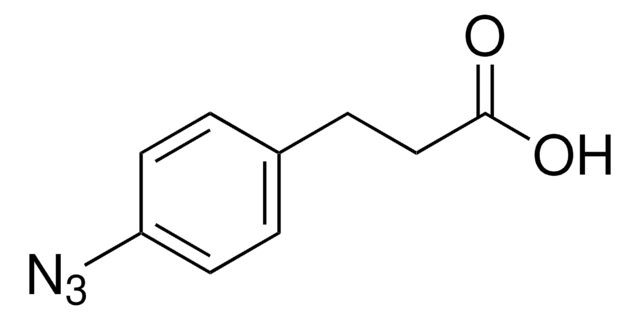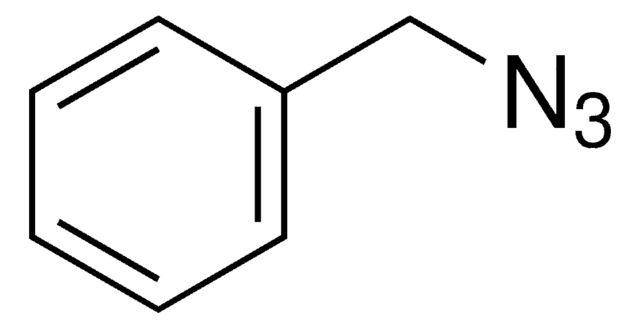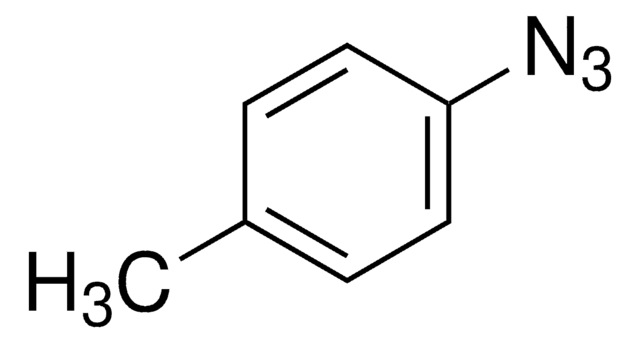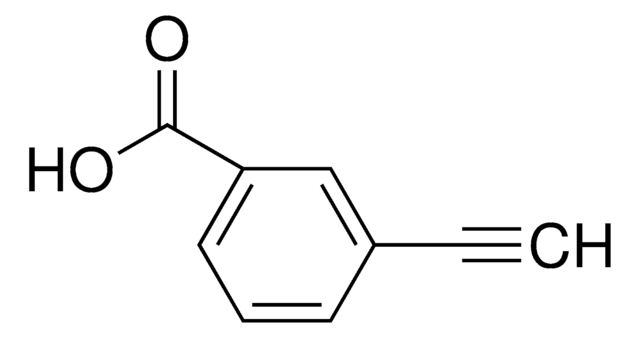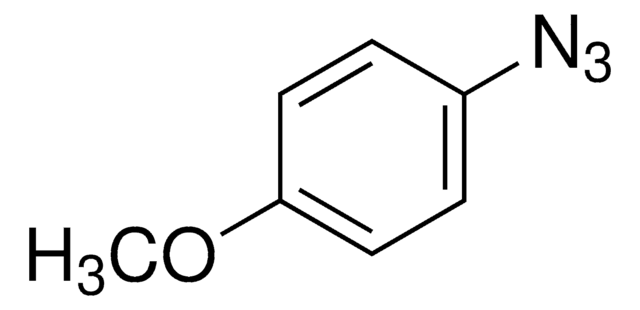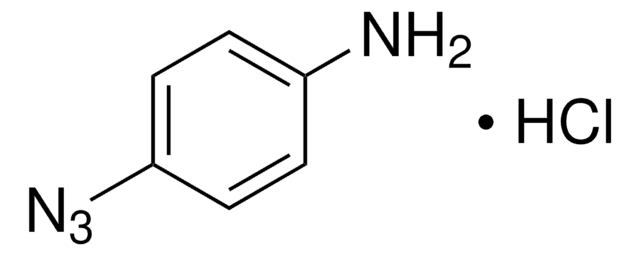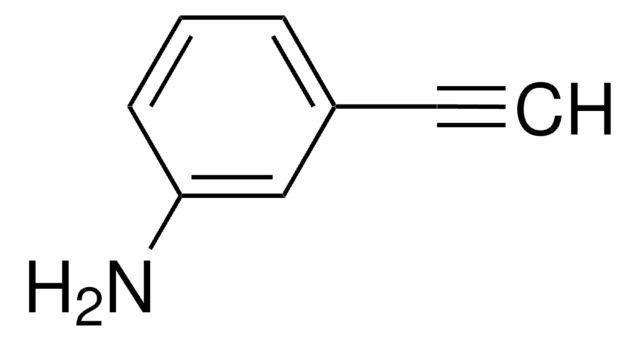778877
4-Azidobenzoic acid solution
~0.2 M in tert-butyl methyl ether, ≥95.0% (HPLC)
Sinonimo/i:
9-Azidobenzoic acid solution
Autenticatiper visualizzare i prezzi riservati alla tua organizzazione & contrattuali
About This Item
Formula empirica (notazione di Hill):
C7H5N3O2
Numero CAS:
Peso molecolare:
163.13
Beilstein:
1950876
Numero MDL:
Codice UNSPSC:
12352106
ID PubChem:
NACRES:
NA.22
Prodotti consigliati
Livello qualitativo
Saggio
≥95.0% (HPLC)
Stato
liquid
Concentrazione
~0.2 M in tert-butyl methyl ether
Impurezze
≤2.0% water
Temperatura di conservazione
2-8°C
Stringa SMILE
OC(C1=CC=C(N=[N+]=[N-])C=C1)=O
InChI
1S/C7H5N3O2/c8-10-9-6-3-1-5(2-4-6)7(11)12/h1-4H,(H,11,12)
PQXPAFTXDVNANI-UHFFFAOYSA-N
Categorie correlate
Descrizione generale
4-Azidobenzoic acid is an aromatic azide generally used in copper(I)-catalyzed azide-alkyne cycloaddition reactions.
Applicazioni
Review
Avvertenze
Danger
Indicazioni di pericolo
Consigli di prudenza
Classi di pericolo
Flam. Liq. 2 - Skin Irrit. 2 - STOT RE 2
Organi bersaglio
Blood
Codice della classe di stoccaggio
3 - Flammable liquids
Classe di pericolosità dell'acqua (WGK)
WGK 3
Scegli una delle versioni più recenti:
Possiedi già questo prodotto?
I documenti relativi ai prodotti acquistati recentemente sono disponibili nell’Archivio dei documenti.
Renxun Chen et al.
Biofouling, 25(6), 517-524 (2009-05-02)
Infection associated with implanted biomaterials is common and costly and such infections are extremely resistant to antibiotics and host defenses. Consequently, there is a need to develop surfaces which resist bacterial adhesion and colonization. The broad spectrum synthetic cationic peptide
Todd A Rickett et al.
Biomacromolecules, 12(1), 57-65 (2010-12-07)
Restoring continuity to severed peripheral nerves is crucial to regeneration and enables functional recovery. However, the two most common agents for coaptation, sutures and fibrin glues, have drawbacks such as inflammation, pathogenesis, and dehiscence. Chitosan-based adhesives are a promising alternative
Hirokazu Hasuda et al.
Biomaterials, 26(15), 2401-2406 (2004-12-09)
Photoreactive pullulan was prepared, the polymer was photoimmobilized on polymeric or organic surfaces, and its interactions with a protein and a cell type were investigated. The photoreactive pullulan was synthesized by a coupling reaction with 4-azidobenzonic acid. Surface modification was
Y Ito et al.
Biotechnology progress, 12(5), 700-702 (1996-09-01)
Photoreactive insulin was synthesized by coupling with azidobenzoic acid. The insulin derivative was immobilized onto the wells of polystyrene culture plates by photoir-radiation. The photoimmobilized insulin enhanced the growth of anchorage-dependent cells such as Chinese hamster ovary CHO-K1 and mouse
Bao Li et al.
Regenerative biomaterials, 5(3), 159-166 (2018-06-27)
Photo-reactive poly(vinyl alcohol) (PRPVA) was synthesized by introduction of phenyl azido groups into poly(vinyl alcohol) (PVA) and applied for surface modification. PRPVA was grafted onto cell culture plate surface homogeneously or in a micropattern. Human mesenchymal stem cells (hMSCs) cultured
Il team dei nostri ricercatori vanta grande esperienza in tutte le aree della ricerca quali Life Science, scienza dei materiali, sintesi chimica, cromatografia, discipline analitiche, ecc..
Contatta l'Assistenza Tecnica.